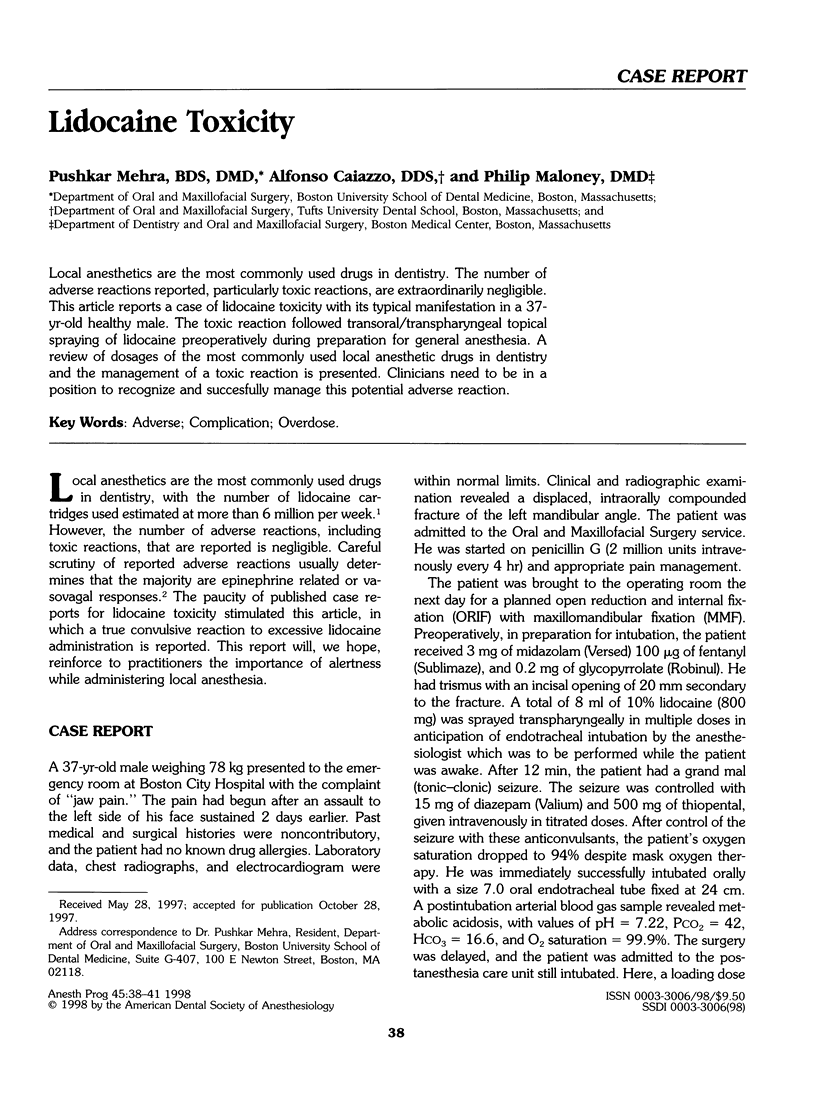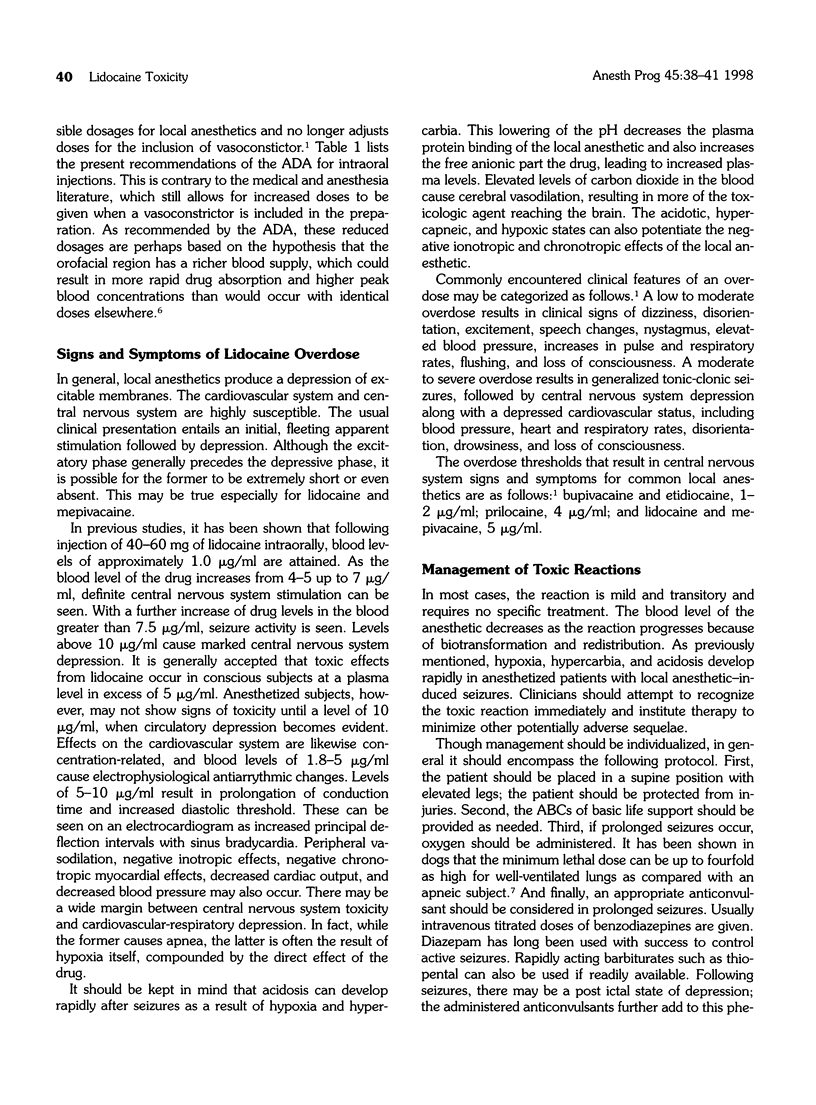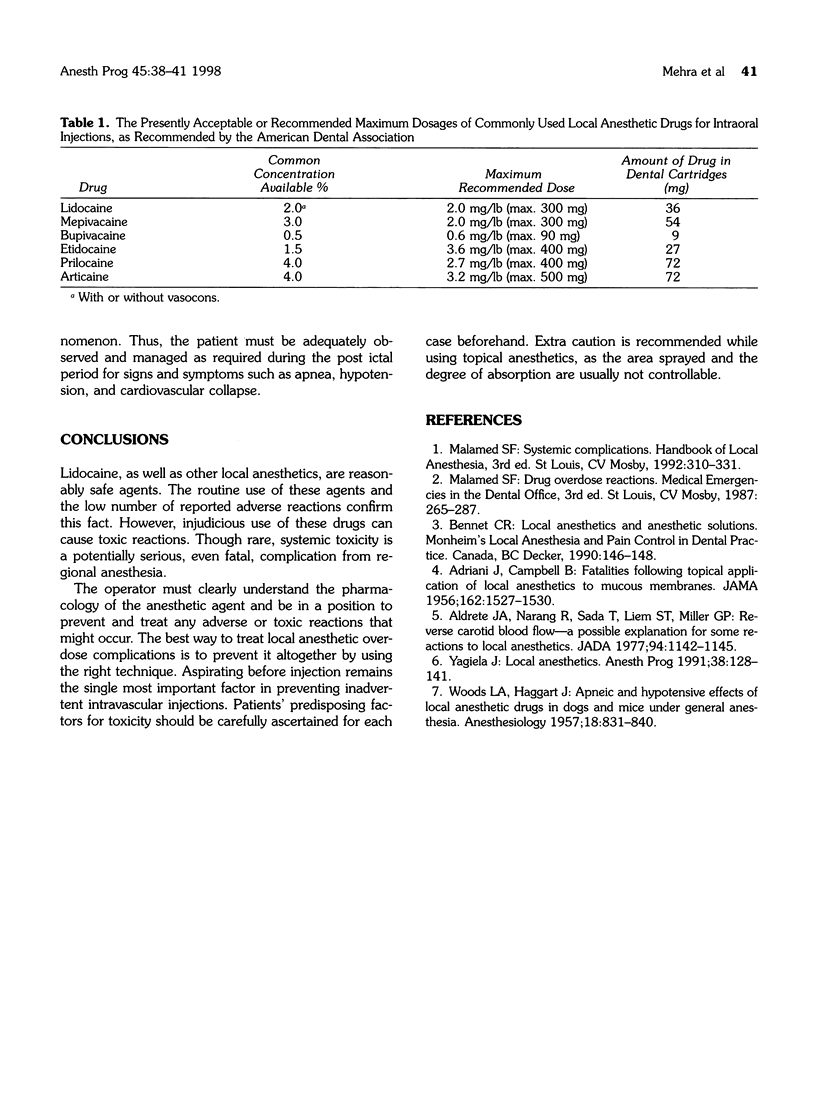Abstract
Local anesthetics are the most commonly used drugs in dentistry. The number of adverse reactions reported, particularly toxic reactions, are extraordinarily negligible. This article reports a case of lidocaine toxicity with its typical manifestation in a 37-yr-old healthy male. The toxic reaction followed transoral/transpharyngeal topical spraying of lidocaine preoperatively during preparation for general anesthesia. A review of dosages of the most commonly used local anesthetic drugs in dentistry and the management of a toxic reaction is presented. Clinicians need to be in a position to recognize and successfully manage this potential adverse reaction.
Full text
PDF



Selected References
These references are in PubMed. This may not be the complete list of references from this article.
- Aldrete J. A., Narang R., Sada T., Tan Liem S., Miller G. P. Reverse carotid blood flow--a possible explanation for some reactions to local anesthetics. J Am Dent Assoc. 1977 Jun;94(6):1142–1145. doi: 10.14219/jada.archive.1977.0365. [DOI] [PubMed] [Google Scholar]
- WOODS L. A., HAGGART J. Apneic and hypotensive effects of local anesthetic drugs in dogs and mice under general anesthesia. Anesthesiology. 1957 Nov-Dec;18(6):831–840. doi: 10.1097/00000542-195711000-00002. [DOI] [PubMed] [Google Scholar]
- Yagiela J. A. Local anesthetics. Anesth Prog. 1991 Jul-Oct;38(4-5):128–141. [PMC free article] [PubMed] [Google Scholar]


